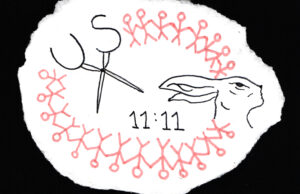Into the obscure: reviews of lesser known media
“The Picture of Dorian Gray” by Oscar Wilde
Immediately after reading the late 19th century controversial hit, “The Picture of Dorian Gray,” by Oscar Wilde, I deemed it to be my favorite book. While the writing style is slightly reminiscent of Hamlet in its somewhat old vocabulary and use of the word “cried” instead of “said” for nearly every quote, this philosophical fiction novel describes a very curious, almost unsettling tale. Unsurprisingly, it centers on a man called Dorian Gray, who is described to be young and extremely attractive. An artist, Basil Hallward, becomes infatuated with Dorian, and befriends him. He claims that Dorian inspires his art, and makes it something great, and decides to paint a picture, or portrait, of Dorian Gray. However, before doing so, Hallward’s friend, Lord Henry Wotton, insists to meet Dorian, who Basil has taken such a liking to. Because Henry is the kind to corrupt anyone he meets, Basil hesitates to let him corrupt “his” Dorian. Henry meets Dorian, and plants “exciting” ideas into his mind, so that once the portrait was complete, and Dorian had a newfound appreciation of his beauty, and wishes that his portrait would age and and represent his soon-to-be sinful soul, while he would remain forever young and beautiful like the day the portrait was painted. This does actually happen, and Dorian adopts the very interesting philosophies of hedonism and aestheticism. He drugs his friends, kills people, and does everything one is warned against as a child. The book explores the effects this worldview has on him, and features intellectually stimulating conversations between Henry and Dorian about the truth of life. It is incredibly quotable, and becomes rather hard to put down. It is the kind of book that can deeply influence people, and can make one seriously consider selling one’s soul to remain young and beautiful forever.
Penny Dreadful
I have to admit, the only reason I watched “Penny Dreadful” (2014) was because I loved “The Picture of Dorian Gray.” This Showtime show features several prominent classic literary characters, including Dorian Gray (Reeve Carney) and Victor Frankenstein (Harry Treadaway). Taking place in Victorian London, the show has several main characters, most of whom are attempting to uncover the mystery of vampire-like creatures which have been brutally murdering adults and children. Many of the characters are heavily angsty, and have had dark backstories. But this only makes the plot more interesting. I would recommend this show if you are interested in horror, the supernatural, and classical literary characters. The cinematography is also notably beautiful, so if you enjoy that, this would be a great choice. However, it does have a TV-MA rating, so if one is not comfortable with mature content, it is important to be wary.
Beetlejuice
“Beetlejuice” (1988), directed by Tim Burton, is possibly one of the most strange and vaguely Halloween-y classics of all time. After Barbara (Geena Davis) and Adam Maitland (Alec Baldwin) die in a car crash, they find they have been confined to their home in spirit form. At first, they don’t mind; that is, until the unbearable family of Deetzes. Comically, the Maitlands make many futile efforts to scare the family out of the house. Soon they find that Lydia, the teenaged daughter of the Deetzes (Winona Ryder), can see them, and they eventually befriend her. Yet they still wish for the Deetzes to move out, and this wish of theirs attracts the rambunctious and amusing yet terrible demonic-like creature, Beetlejuice, who the film is named after. Somewhat similar to “The Addams Family,” “Beetlejuice” has great amount of comedy and small amounts of horror. This film will appeal to almost anyone who likes comedy, and does not have a hatred for Tim Burton’s film style.


